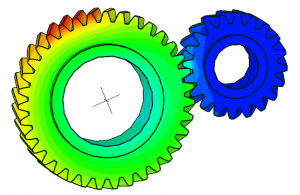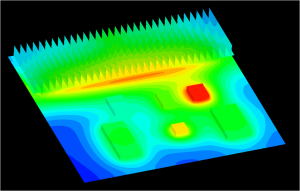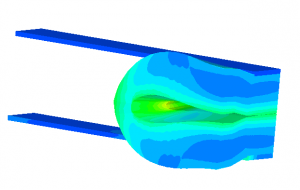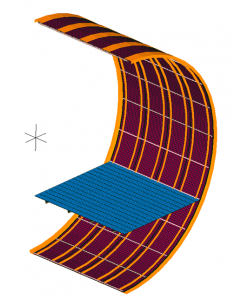Final Element Analysis is considered a reliable method of assessing engineering problems. It is used to analyse solid body structures, solid body thermal problems, electromagnetism, fluid dynamics, etc. This means your manufacturing process, design, or test method could be simulated as a virtual model before expensive prototyping takes place.
Structural and thermal examples:
- Static and dynamic analysis of linear stress, e.g. buckling;
- Analysis of fatigue and crack propagation, e.g. pressure accumulators on hydraulic systems;
- Thermo-structural Analysis, e.g. the structural deformation of the Eiffel Tower when the sun heats it up;
- Kinematic analysis of structural stresses, e.g.determining a gripper’s most efficient options for various geometries and target motions;
- Analysis of FSI (Fluid – Structure Interaction ), e.g. water hammer;
- Modal and harmonic analysis, such as structural vibration, e.g. large chimneys vs. wind, oil rigs vs. waves;
- Transient analysis, e.g. transient thermal stress analysis, structural dynamic stress analysis;
- Contact analysis: e.g. gears, snap fits, assemblies;
- Impact analysis (crash simulation) e.g., vehicle collision.
Electromagnetism examples:
- NDT Validation,
- Joule heating,
- Interferences,
- Spark gap,
- Magnetic forces.
Biomechanics examples(contact us for further examples):Bone structure under load,
- Behaviour of a bone and related implant under various loads and forces,
- Muscle behaviour at different levels of complexity,
- The structure of blood vessel walls in blood flow analysis.
In projects involving biomechanics and molecular dynamic analysis we collaborate with scientists from Europe, so every project would involve suitable consultation.







